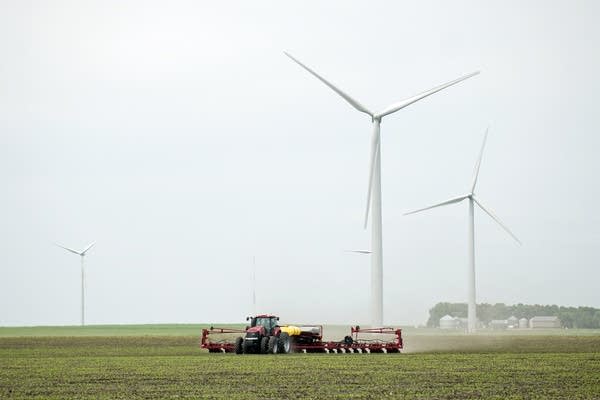State officials promise tougher approach on nitrates contaminating groundwater

Dean Tofteland drives his tractor and sprays one of his fields amongst wind turbines north of Luverne, Minn.
Jackson Forderer / For MPR News
Go Deeper.
Create an account or log in to save stories.
Like this?
Thanks for liking this story! We have added it to a list of your favorite stories.


